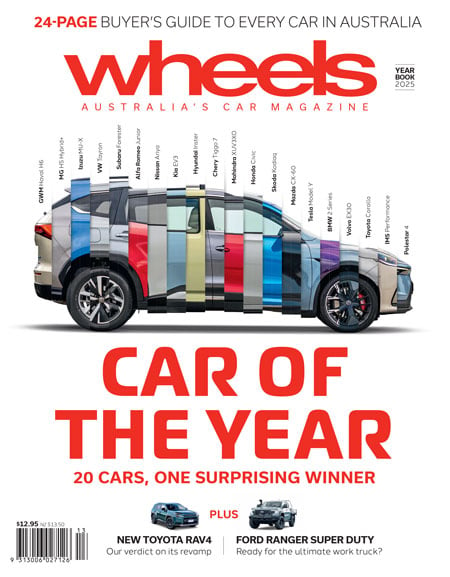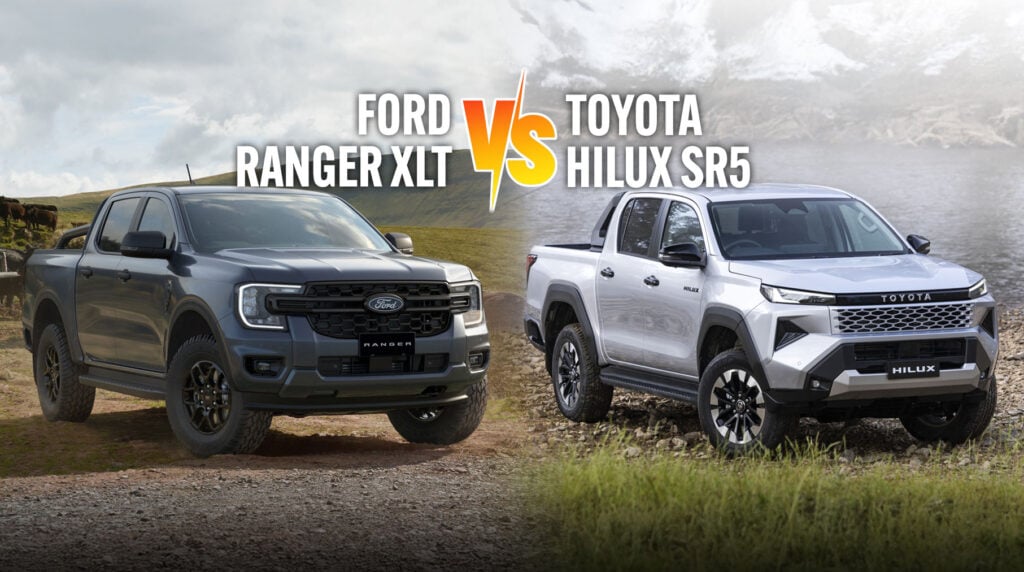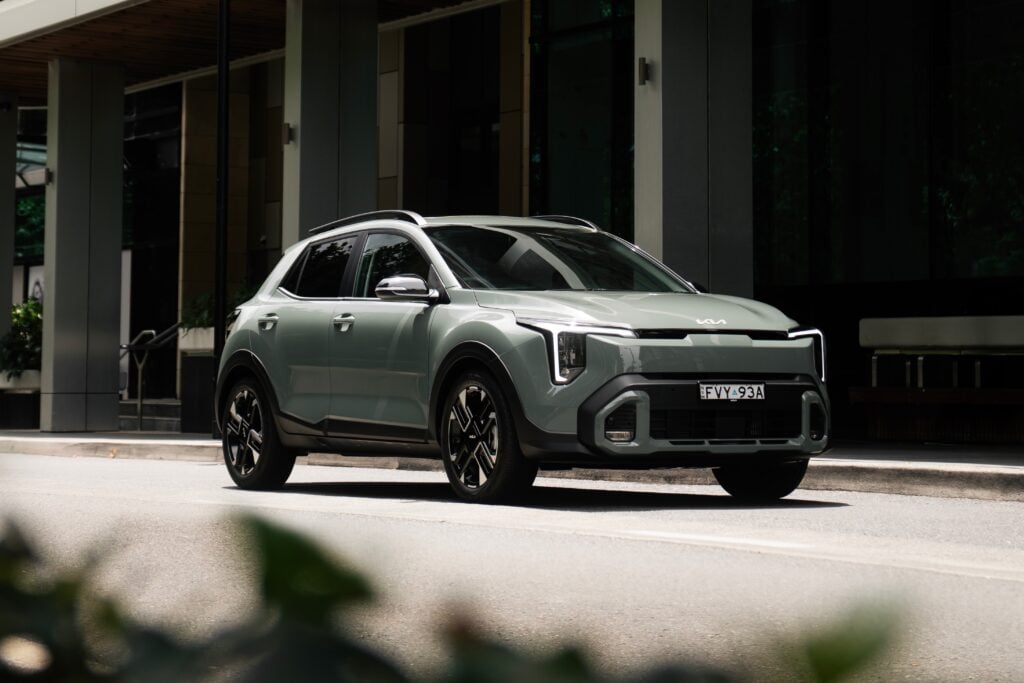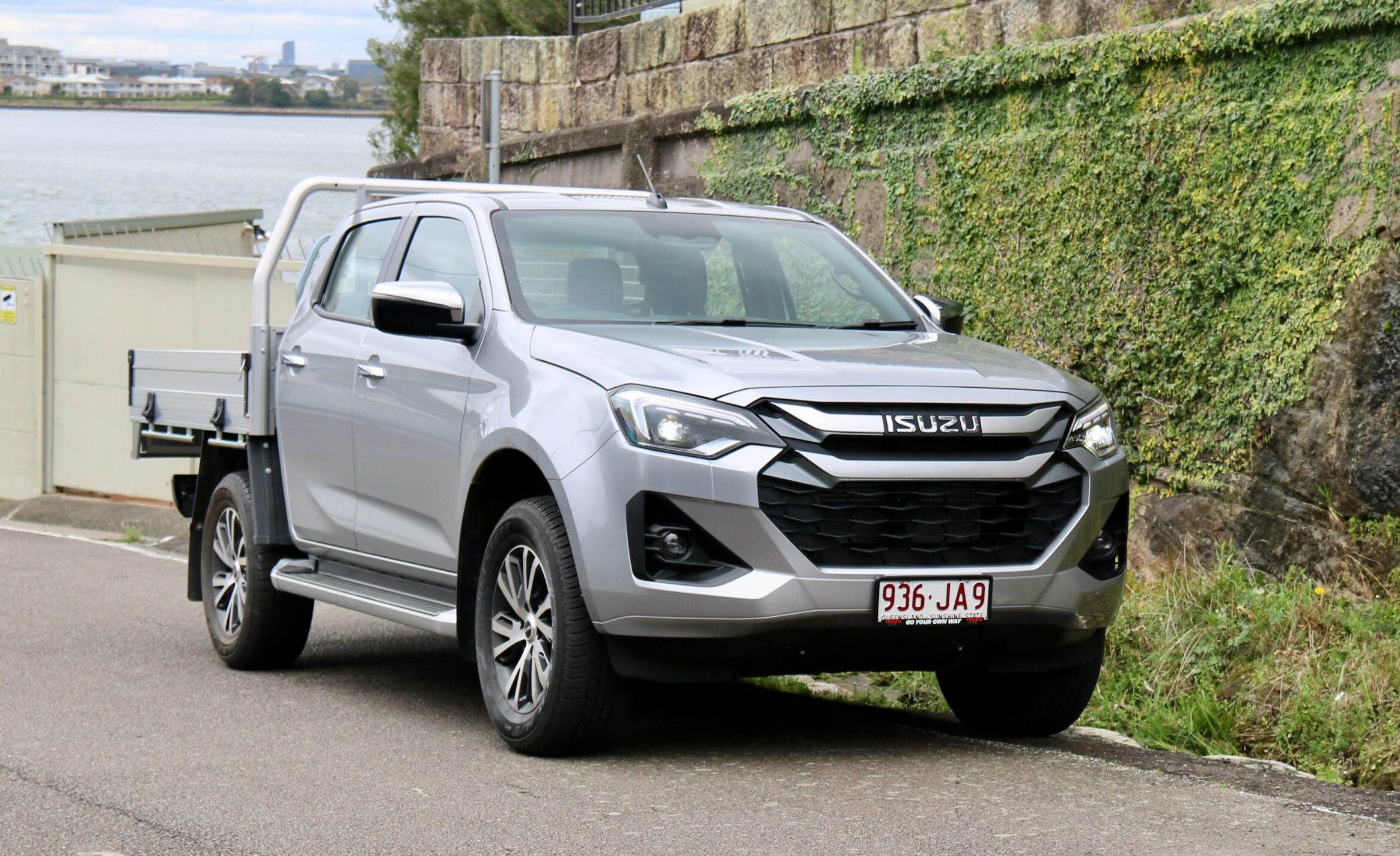
Things we like
- Excellent safety equipment list across the range
- Modern and feature-packed cabin
- New infotainment system an improvement
Not so much
- Powertrain’s starting to feel a bit dated
- Huge range can get confusing
- Manual available only on base SX
How comfortable and practical is the Isuzu D-Max?
The current shape D-Max impressed with its modern cabin when it launched locally in 2020, and even five years on against some newer competition, it’s still a good place to spend some time. The materials used are reasonable quality and hard wearing, while the new touchscreen software is easier to use and the digital driver’s display on upper-spec models also makes the cabin feel more modern.
Centre of the cabin is a new 7.0-inch or 9.0-inch (depending on model) touchscreen with a new layout that’s far easier to use than before. The screen is brighter too, and while it can be a bit slow to respond to touch, it’s well appointed with wireless smartphone mirroring and satellite navigation on higher-spec models. The eight-speaker sound system on the LS-U and above is surprisingly punchy and even has speakers in the roof.
The D-Max’s cabin features a good amount of storage space, including reasonable door bins, big cup holders in the centre console, a dual-level glovebox and pull-out cup holders on the dashboard on upper-spec models, a box underneath the central armrest and a tray ahead of the gearbox. Seat comfort is reasonable though the seats are a bit flat. The rear seat of the D-Max is comfortable and spacious for the segment, and brings handy features like air vents, a USB port, seat pockets, door pockets and a central armrest with cupholders. The seat can fold up or down to increase practicality, with storage available underneath the seat base.
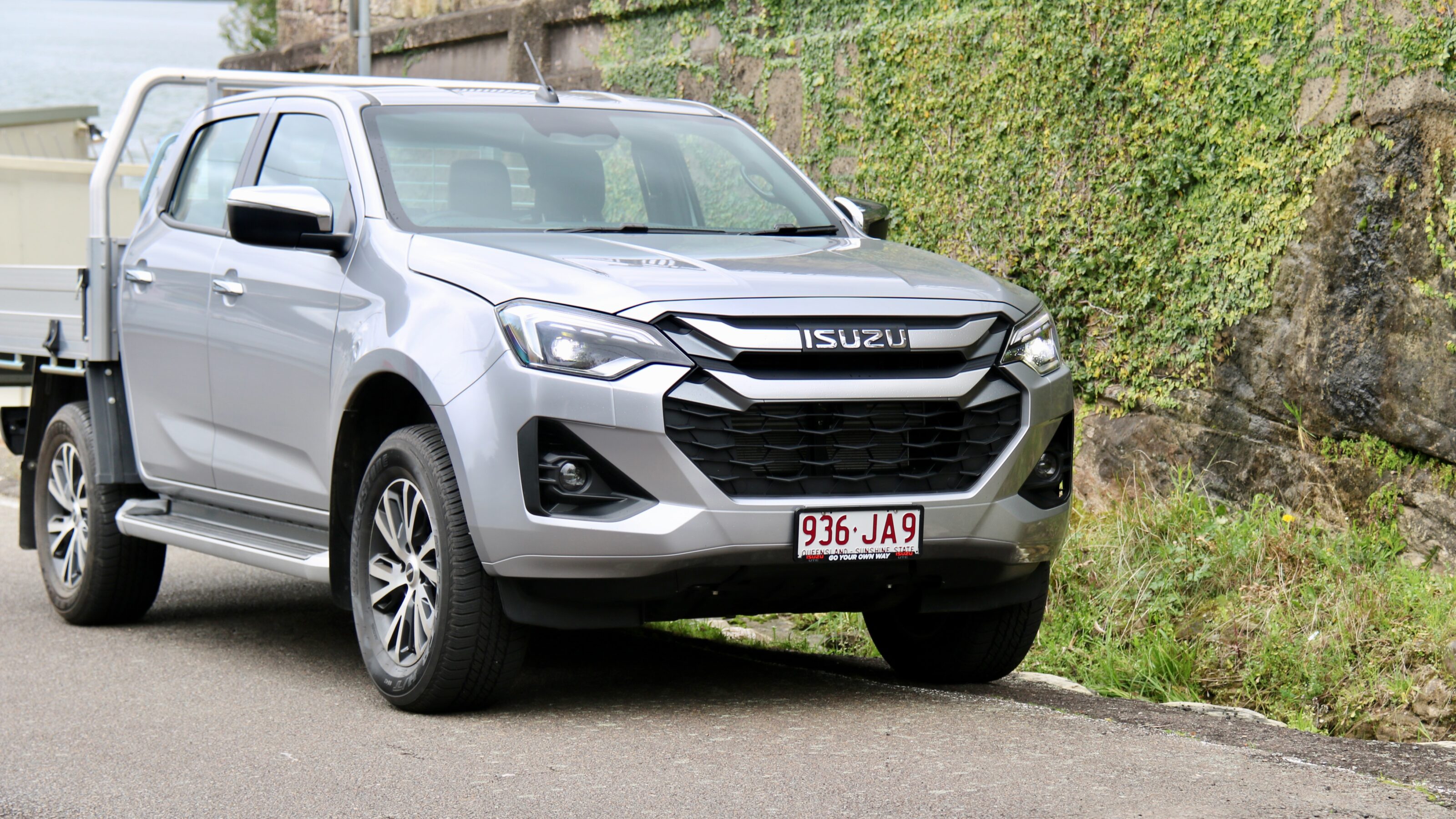
How big is the Isuzu D-Max?
Depending on bodystyle, the D-Max measures between 5,280mm and 5,430mm long, between 1,870mm and 1,880mm wide, between 1,785mm and 1,800mm tall, and rides on a 3,125mm long wheelbase.
The D-Max’s tray measures between 1,570mm long (utility) and 2,100mm long (single cab chassis), and between 1,530mm (utility) and 1,777mm (cab chassis) wide.
How much can the Isuzu D-Max tow?
The D-Max range can tow a 3,500kg braked trailer with the larger 3.0-litre engine – matching the best in the segment – whereas the smaller 1.9-litre engine can tow either 3,000kg (auto) or 2,800kg (manual). All models can tow a maximum 750kg unbraked trailer and the maximum tow ball download is 350kg for 3.0-litre models, 300kg for the 1.9-litre auto and 280kg for the 1.9-litre manual.
The GVM (Gross Vehicle Mass) for 1.9-litre variants is 3,000kg, with the larger engine adding 100kg to that. The Gross Combination Mass (GCM) ranges from 5,300kg for the entry-level SX 1.9-litre manual 4×2 to 6,000kg for the 3.0-litre 4×4 models.
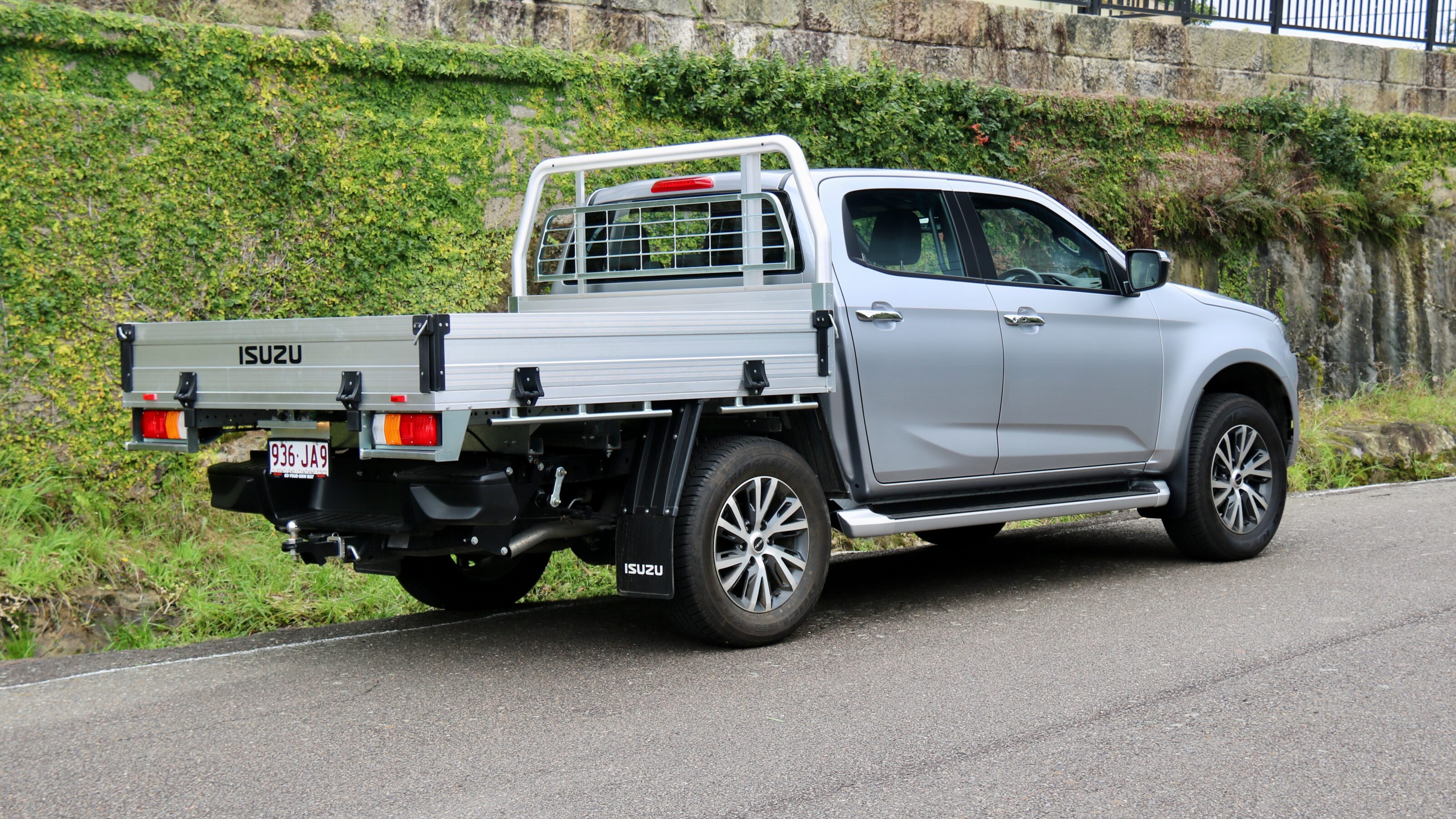
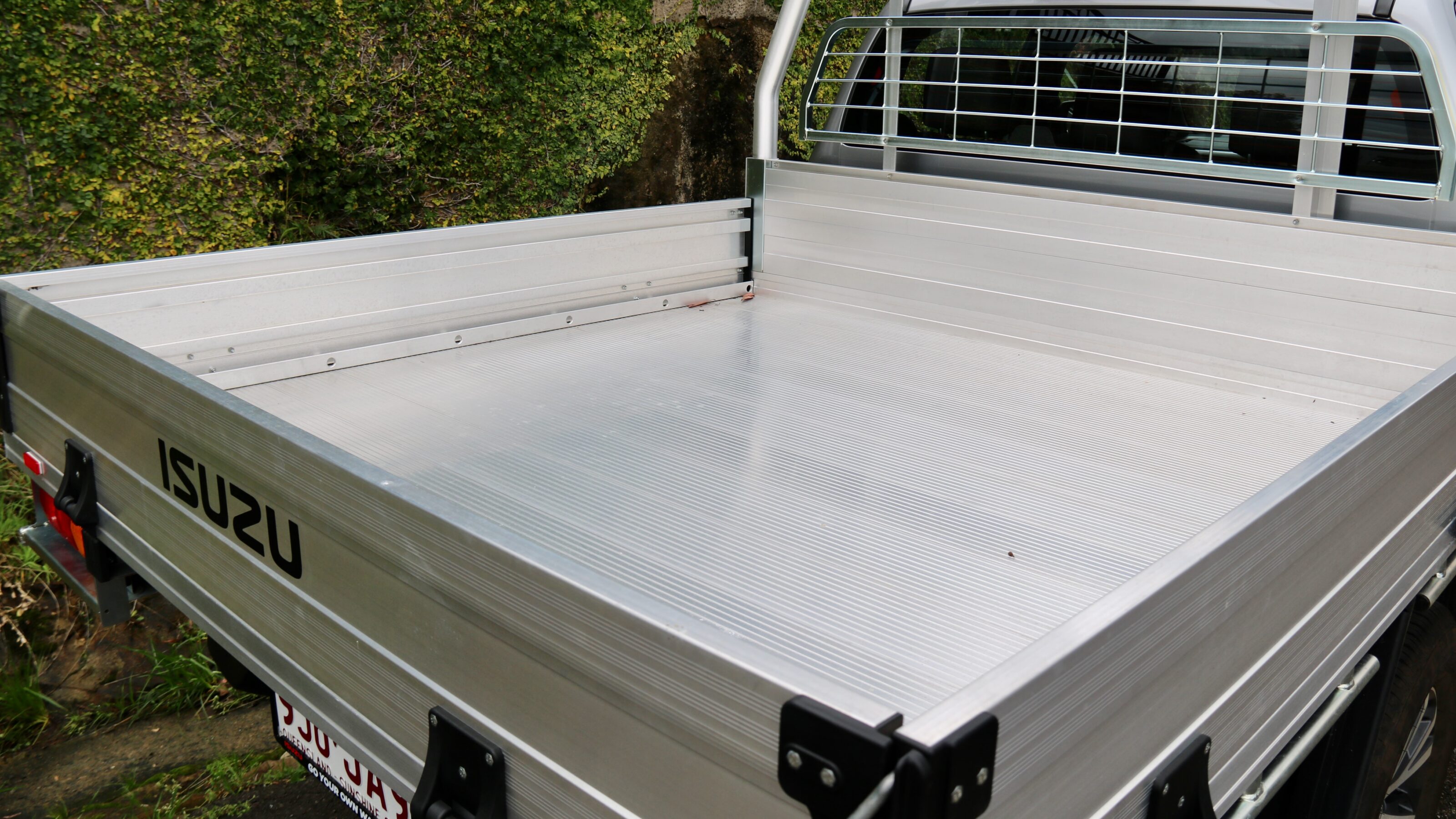
Will I enjoy driving the Isuzu D-Max?
Regardless of whether you’re used to driving a ute or not, the D-Max is a refined and comfortable offering in the ute segment. That’s impressive given its excellent offroad ability, which can pose a compromise in comfort in some competitors but not here.
Around town, the ride comfort can be a touch firm, similar to its competitors, but it’s quiet at speed and an excellent long-distance tourer. The steering offers good feel and is quite light, so that urban driving is easy. Its rear vision is good for a ute thanks to larger mirrors, though there’s no 360-degree camera on any model to help with low-speed manoeuvring.
There are two four-cylinder turbo-diesel engine options in the D-Max range: a 110kW/350Nm 1.9-litre unit in entry-level models, and a larger 140kW/450Nm 3.0-litre sitting above it. Some variants can be had with a six-speed manual but most are equipped with a six-speed automatic, which is a generally intuitive gearbox to use, though a few more gears with tighter ratios would make it better. Both engines will last forever, though some rivals do offer stronger outputs if that’s what you’re after. Refinement is actually better in the smaller, newer engine as it’s quieter but the 3.0-litre is noticeably gruntier and in the real world, returns pretty similar fuel economy to its smaller sibling. The 3.0-litre engine can also tow more at 3,500kg.
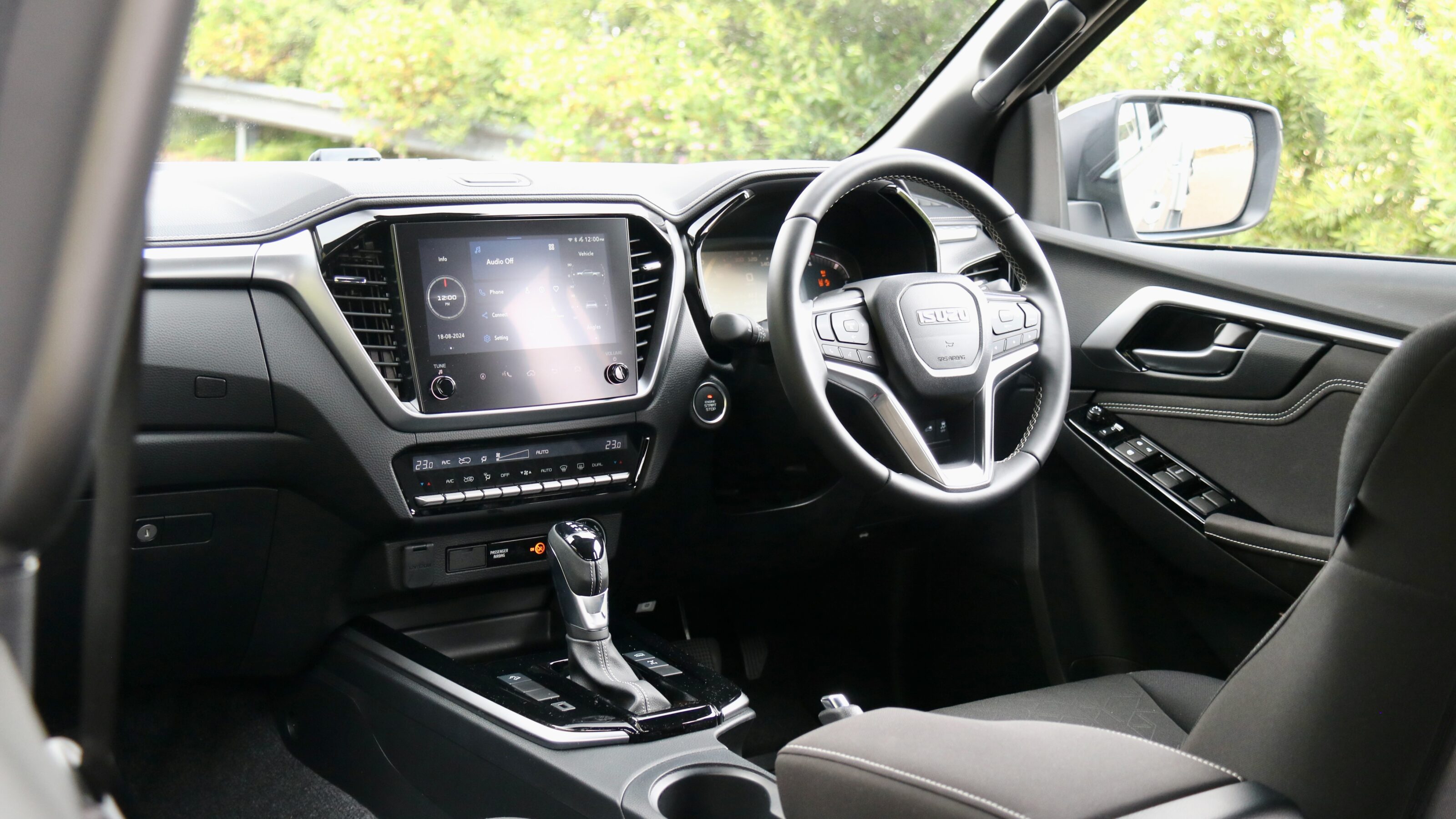
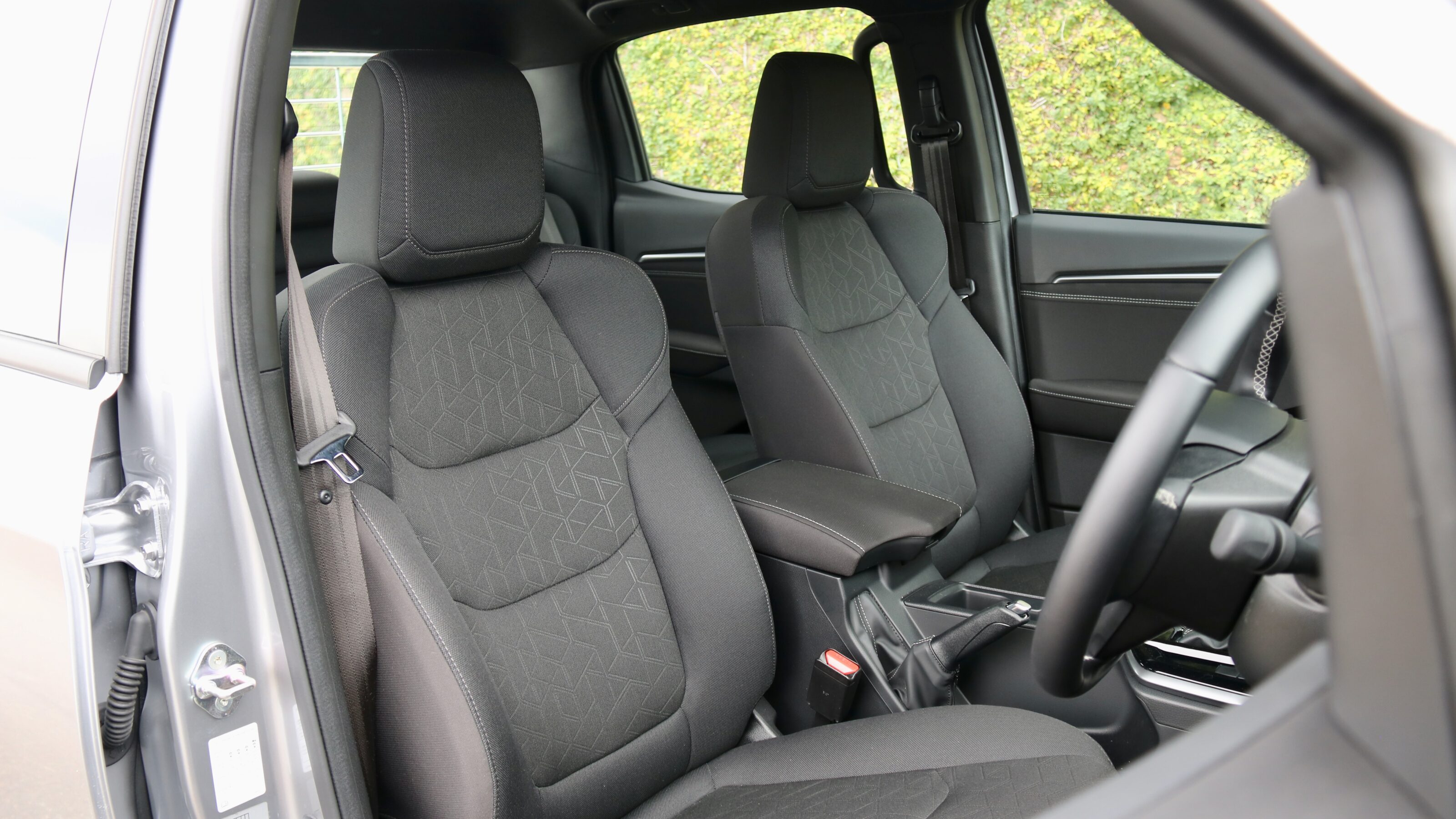
How much does the Isuzu D-Max cost to run?
The claimed combined fuel consumption for the D-Max ranges from 6.7L/100km for 1.9-litre 4×2 variants to 8.0L/100km for 3.0-litre 4x4s, while CO2 emissions range from 177g/km to 207g/km. Those figures, in our experience, aren’t difficult to match and even 3.0-litre 4×4 autos will easily dip under 7L/100km on highway runs. The D-Max range features a 76-litre fuel tank, easily earning drivers more than 1,000km of range in highway driving.
What warranty covers the Isuzu D-Max?
The D-Max is covered by a six-year/150,000km warranty with seven years of roadside assistance, as well as five years of capped price servicing.
Aside from the initial three-month/3,000km free inspection, the D-Max’s service intervals are once-yearly/every 15,000km, and each of the first five services costs $469 each for a five-year/75,000km total of $2,345.
Which Isuzu D-Max should I buy?
It depends on what your preferences are for a ute, but we think that the D-Max X-Rider ($59,500 plus on-road costs) sticks out from the D-Max range because of its value equation. While inside it feels a lot like the LS-M on which it’s based, the exterior stands out because it looks fairly similar to the high-end X-Terrain with its sports bar, LED lighting and gloss black highlights. Otherwise, the X-Terrain itself is currently priced from $67,990 drive away as a permanent special – curiously making it thousands less expensive than lower-spec models like the LS-U+ – and that makes it excellent value for money. At that price, it’s loaded with kit and a great all-rounder.
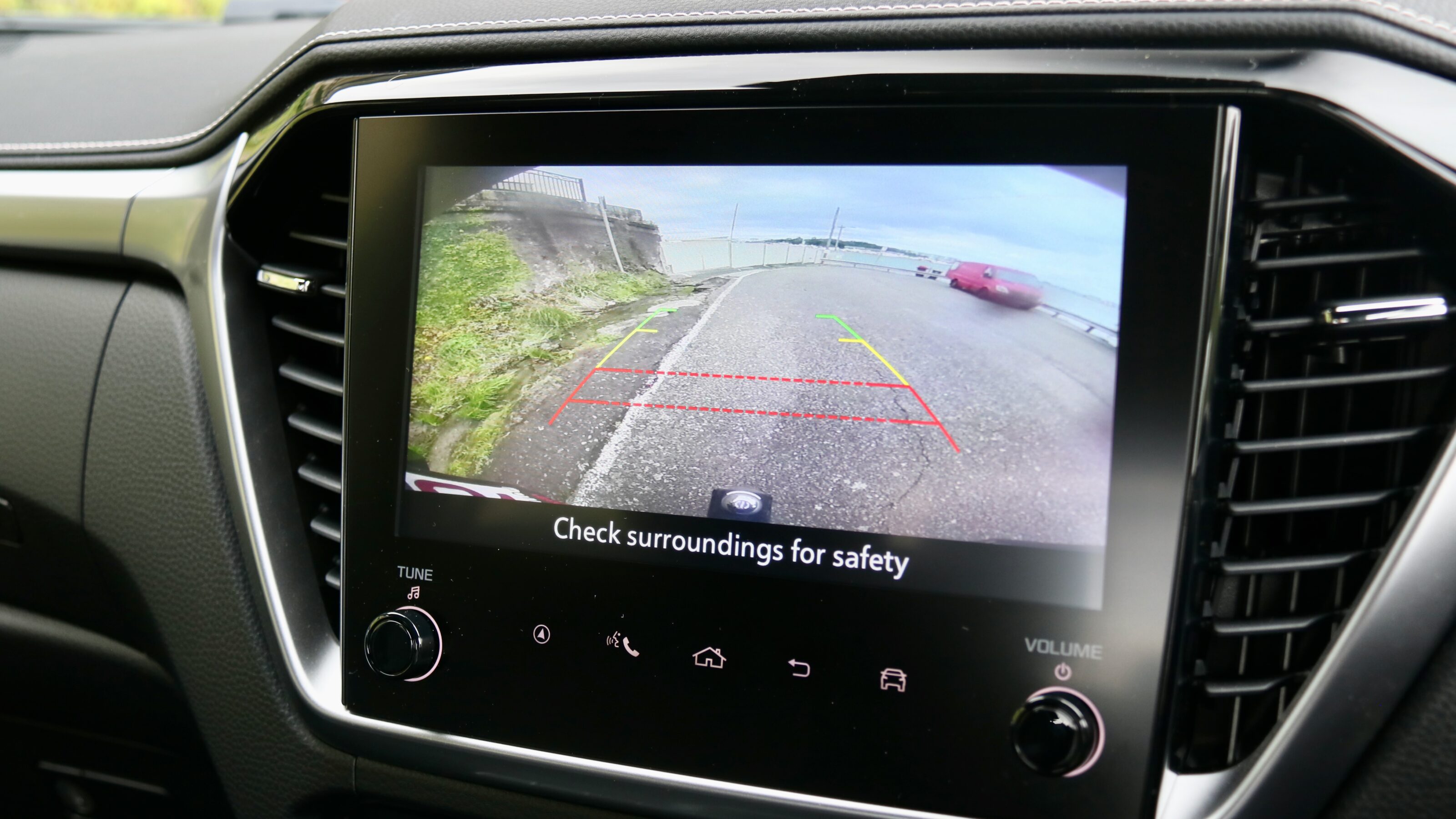
How much does the Isuzu D-Max cost?
As with many rivals, the D-Max range is diverse, covering different bodystyles, tray types, engines, manual or automatic transmissions and various models with differing equipment levels. Current pricing on the range from entry level to the top-spec Blade model are set out below.
- SX Single Cab Chassis 1.9L 4×2 manual: $32,700 ($32,990 drive away permanent special)
- SX Single Cab Chassis 1.9L 4×2 auto: $34,700
- SX Single Cab Chassis 3.0L 4×2 manual High Ride: $34,700
- SX Single Cab Chassis 3.0L 4×2 auto High Ride: $36,700
- SX Space Cab Chassis 3.0L 4×2 auto High Rde: $40,200
- SX Crew Cab Chassis 1.9L 4×2 auto High Ride: $41,200
- SX Crew Cab Utility 1.9L 4×2 auto High Ride: $42,700
- SX Single Cab Chassis 3.0L 4×4 manual: $42,700
- SX Crew Cab Chassis 3.0L auto 4×2 High Ride: $43,200
- SX Single Cab Chassis 3.0L auto 4×4: $44,700
- SX Crew Cab Utility 3.0L auto 4×2 High Ride: $44,700
- SX Space Cab Chassis 3.0L auto 4×4: $48,200
- SX Crew Cab Chassis 3.0L manual 4×4: $49,200
- SX Crew Cab Utility 1.9L auto 4×4: $50,700
- SX Crew Cab Chassis 3.0L auto 4×4: $51,200
- SX Crew Cab Utility 3.0L auto 4×4: $52,700
- LS-M Crew Cab Chassis auto 4×4: $54,300
- LS-U Crew Cab Utility 3.0L auto 4×2 High Ride: $54,500
- LS-M Crew Cab Utility 3.0L auto 4×4: $55,800
- X-Rider Crew Cab Utility auto 4×4: $59,500
- LS-U Space Cab Utility 3.0L auto 4×4: $59,500
- LS-U Crew Cab Chassis 3.0L auto 4×4: $61,000
- LS-U Crew Cab Utility 3.0L auto 4×4: $62,500
- LS-U+ Crew Cab Utility 3.0L auto 4×4: $65,500
- X-Terrain Crew Cab Utility 3.0L auto 4×4: $70,500 ($67,990 drive away permanent special)
- Blade Crew Cab Utility 3.0L auto 4×4: $76,990 (drive away)
What features are standard in the Isuzu D-Max?
- 17-inch steel wheels with Dunlop AT25 tyres
- Three-leaf standard rear suspension (ute) or heavy-duty rear suspension (cab chassis)
- Dusk-sensing automatic halogen headlights
- Rain-sensing automatic wipers
- Remote keyless entry
- Urethane steering wheel/gear selector/handbrake
- Vinyl floor
- Cloth upholstery
- 4.2-inch driver’s display
- 8.0-inch touchscreen
- Wired and wireless Apple CarPlay and Android Auto smartphone mirroring
- AM/FM/DAB+ digital radio
- Four-speaker sound system
- 2x USB-C ports (1x in single cab and space cab)
- USB-A port for dashcam
- Manual single-zone air-conditioning
D-Max safety equipment:
- Eight airbags (including a front centre unit)
- Autonomous emergency braking (AEB) with pedestrian, cyclist and turn assist
- Misacceleration assist (auto only)
- Blind-spot monitoring with rear cross-traffic alert (with braking)
- Driver attention monitoring
- Forward collision warning
- Lane-departure warning
- Lane-keep assist
- Adaptive cruise control with stop and go functionality
- Traffic sign recognition
- Intelligent speed limit assistance
- Auto high beam
- Driver attention monitoring
- Reversing camera
The D-Max range was awarded a five-star ANCAP rating in 2022 with scores of 86 percent for adult occupancy protection, 89 percent for child occupancy protection, 69 percent for vulnerable road user protection and 84 percent for safety assist.
LS-M model adds:
- 17-inch alloy wheels
- Three-leaf standard rear suspension (ute models)
- Bi-LED headlights
- LED front fog lights
- Rear parking sensors (ute models)
- Body-coloured mirrors, door handles and tailgate handle
- Body-coloured mirrors, door handles and tailgate handle
- ‘High-grade cloth upholstery
X-Rider model adds:
- Gloss black 17-inch alloy wheels
- Black grille
- Black front underbody spoiler
- Black rear step bar
- Black mirrors, door handles and tailgate handle
- Black interior door handles
- Dark grey and black interior door trims
- Piano black steering wheel spoke trims
- Black headlining
- Black sports bar
LS-U model adds:
- 18-inch alloy wheels with Bridgestone 684II HT tyres
- Tow bar receiver
- Tub liner (ute models)
- Silver side steps
- Chrome door handles and tailgate handle
- Electric-folding and heated mirrors
- Keyless entry with push button start with walk away locking
- LED tail-lights
- 7.0-inch digital instrument cluster
- 9.0-inch touchscreen infotainment system
- Six- (space cab) or eight-speaker sound system (dual cab)
- Inbuilt satellite navigation
- 3x USB-C ports (2x in space cab)
- Dual-zone automatic climate control
- Auto-dimming rear-view mirror
- Leather steering wheel and gear selector
- Soft-touch door trims and centre console armrest
- Carpet flooring
- Driver’s electric lumbar adjustment
- Tyre pressure monitoring
LS-U+ model adds:
- Heated front seats
- Leather upholstery
- 10-way electric driver’s seat
- Four-way electric front passenger seat
X-Terrain model adds:
- 18-inch matte grey alloy wheels
- ‘X’ badging on tailgate
- Matte black roller tonneau cover
- Dark grey metallic aero sports bar
- Dark grey metallic sidesteps, mirrors, door handles, tailgate handle, roof rails, front and rear underbody spoilers and fender flares
- Leather upholstery with red stitching
- Remote engine start
- Front parking sensors
Blade model adds:
- Black 17-inch wheels with 275/65R17 Goodyear Wrangler Duratrac RT all-terrain tyres
- Black badging
- Blade-specific front grille with integrated 112-watt lighter
- Blade-specific front bumper and wheel arches
- Side steps
- Sports bar
- Monroe twin-tube shock absorbers
- Suspension lift
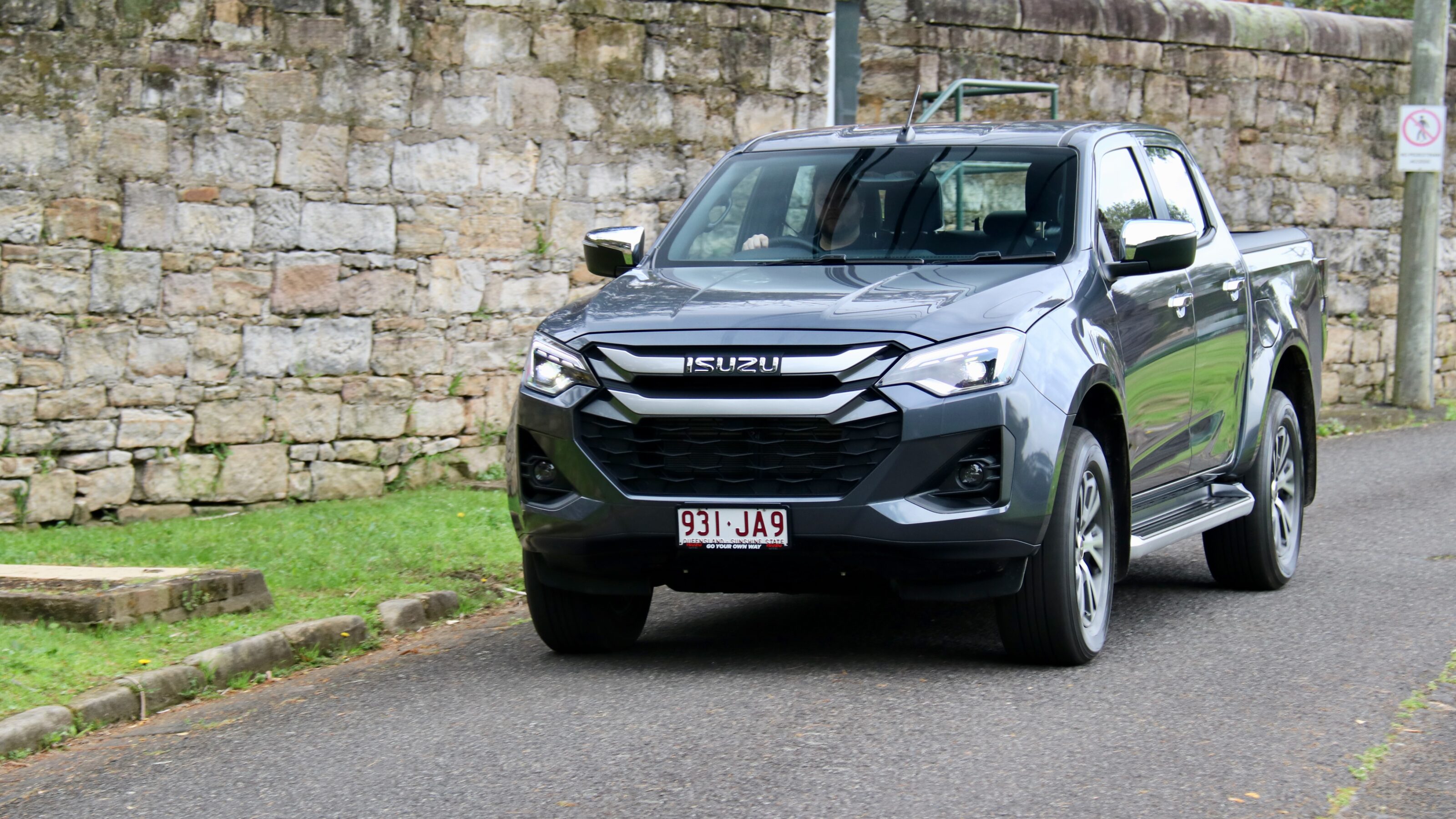
Which utes rival the Isuzu D-Max?
We recommend
-
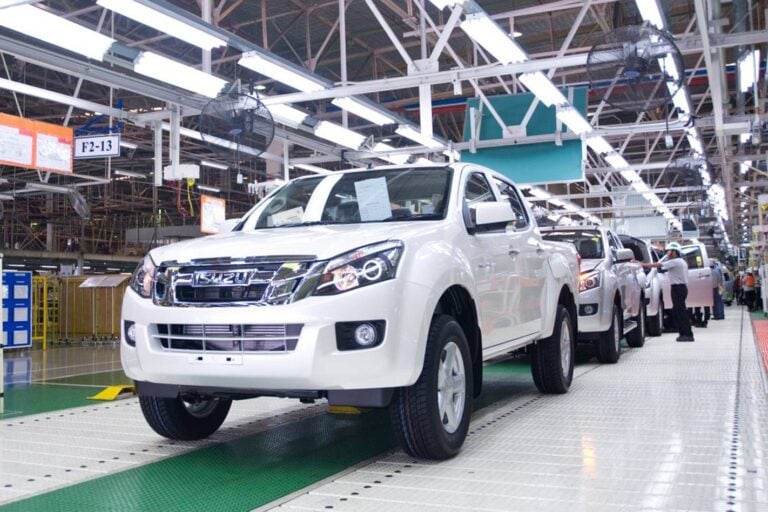 Advice
AdviceIsuzu - History, Trivia & Fast Facts
WhichCar has burned the midnight oil to bring you the lowdown on Isuzu, the Japanese brand famous for diesel engines and trucks – and bringing us Holdens such as the Gemini and Piazza.
-
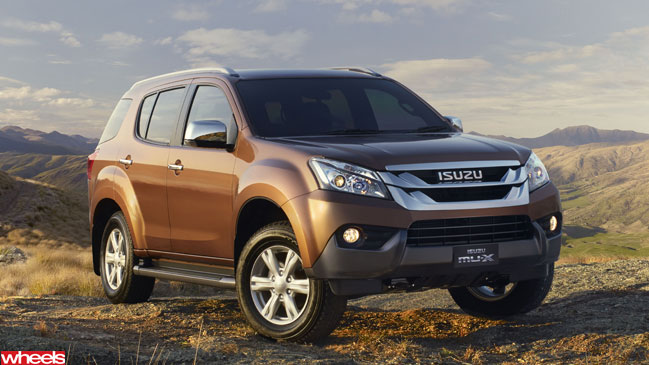 Reviews
ReviewsFirst drive: Isuzu MU-X
Isuzu clearly knows when it’s onto a good thing. Riding on the D-Max’s wave of success – which is up 30 percent year on year – the Japanese brand will launch its first SUV, the MU-X, in Australia next month. And we’ve been driving it.

